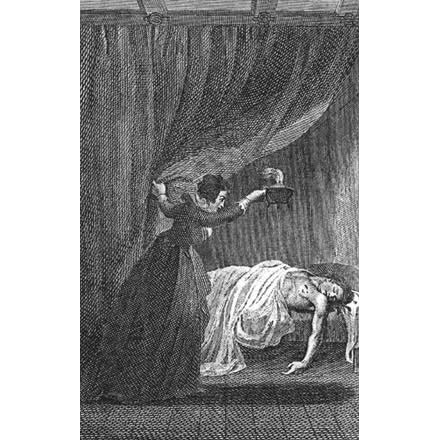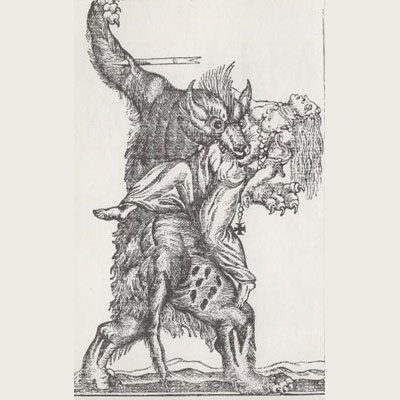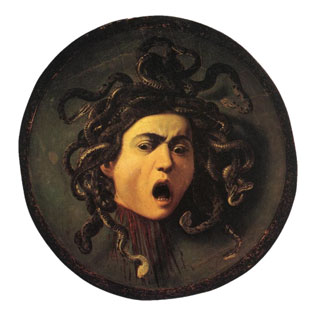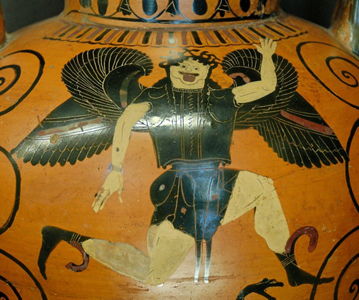 Udolpho: Taken from The Mysteries of Udolpho, an unforgettable Gothic romance novel by Ann Radcliffe, Udolpho itself is the grim, crumbling castle where the lead character, Emily St. Aubert, is held captive by the wicked Signor Montoni and begins to experience all manner of terror – physical, psychological and spiritual. Radcliffe’s novel is also pivotal to the plot of Northanger Abbey by Jane Austen – in which a young woman begins to associate her friends and family with Gothic characters after reading the novel.
Udolpho: Taken from The Mysteries of Udolpho, an unforgettable Gothic romance novel by Ann Radcliffe, Udolpho itself is the grim, crumbling castle where the lead character, Emily St. Aubert, is held captive by the wicked Signor Montoni and begins to experience all manner of terror – physical, psychological and spiritual. Radcliffe’s novel is also pivotal to the plot of Northanger Abbey by Jane Austen – in which a young woman begins to associate her friends and family with Gothic characters after reading the novel.

Oneiza: The beloved of Thalaba the Destroyer, from the 1801 epic poem composed by Robert Southey. Taking its inspiration from Islamic theology and morality, Oneiza is promised to Thalaba, but his duty as a Muslim and God’s champion prevents him from marrying her. While travelling in the garden paradise of Aloadin, he discovers a woman being assaulted – Oneiza, captured by Aloadin the sorcerer. She dies before Thalaba can save her and her spirit follows him thereafter, disapproving and lamenting of his tasks.
 Loups Garou/Werewolf: Shapeshifting humans popular in mythology and folklore, also known as lycanthropes. Able to transform themselves into a wolf, or a human form with anthropomorphic, lupine features, these cursed individuals were most often subjected to a bite or scratch from another werewolf in order to gain their gifts. Blessed with heightened strength and senses and only able to shift on the rising of the full moon, werewolves remain dominant figures in the realms of Gothic horror for their savage demeanours. However, it remains to be seen as to whether they are truly evil creatures or, as some believe, the hounds of God sent down to do battle with witches and demons. Individuals with epilepsy were often thought to mistakenly have lycanthropy, and in medieval Europe, methods such as surgery and medicine were used to attempt to cure it. Some were even executed and their bodies cremated, the better to stop them from rising again as vampires. While crucifixes and holy water have no effect on the beasts, only silver weapons seem to cause the werewolf any harm, most commonly in the form of bullets.
Loups Garou/Werewolf: Shapeshifting humans popular in mythology and folklore, also known as lycanthropes. Able to transform themselves into a wolf, or a human form with anthropomorphic, lupine features, these cursed individuals were most often subjected to a bite or scratch from another werewolf in order to gain their gifts. Blessed with heightened strength and senses and only able to shift on the rising of the full moon, werewolves remain dominant figures in the realms of Gothic horror for their savage demeanours. However, it remains to be seen as to whether they are truly evil creatures or, as some believe, the hounds of God sent down to do battle with witches and demons. Individuals with epilepsy were often thought to mistakenly have lycanthropy, and in medieval Europe, methods such as surgery and medicine were used to attempt to cure it. Some were even executed and their bodies cremated, the better to stop them from rising again as vampires. While crucifixes and holy water have no effect on the beasts, only silver weapons seem to cause the werewolf any harm, most commonly in the form of bullets.

 Gorgon: Hideous female creatures from Greek mythology. Derived from the Greek gorgós, or ‘terrible’, these vile women possessed claws, fangs and scaled skin, while their hair was made of living, writhing serpents. First appearing in the very earliest written records, including the writings of Homer, their likenesses were often placed upon objects or even houses, the better to provide protection with their deadly gazes that could turn a man into stone. Within mythology and legend, three Gorgon sisters existed as the daughters of the sea god Phorcys and Ceto the sea monster; Stheno and Euryale who were immortal, and Medusa who was not. The hero Perseus was able to sever her head while looking at her reflection in Athena’s mirrored shield, but upon returning to court and holding up Medusa’s head, everyone present turned to stone. The superstitious also believed that drawing blood from the right side of a Gorgon granted the power of resurrection, while the left side was a fatal poison.
Gorgon: Hideous female creatures from Greek mythology. Derived from the Greek gorgós, or ‘terrible’, these vile women possessed claws, fangs and scaled skin, while their hair was made of living, writhing serpents. First appearing in the very earliest written records, including the writings of Homer, their likenesses were often placed upon objects or even houses, the better to provide protection with their deadly gazes that could turn a man into stone. Within mythology and legend, three Gorgon sisters existed as the daughters of the sea god Phorcys and Ceto the sea monster; Stheno and Euryale who were immortal, and Medusa who was not. The hero Perseus was able to sever her head while looking at her reflection in Athena’s mirrored shield, but upon returning to court and holding up Medusa’s head, everyone present turned to stone. The superstitious also believed that drawing blood from the right side of a Gorgon granted the power of resurrection, while the left side was a fatal poison.
To purchase Alchemy Gothic products visit the Alchemy Dealer List - Trade Customers visit www.alchemyengland.com
Copyright Alchemy Carta Ltd. Alchemy Gothic is a registered Trademark, All Rights Reserved. Privacy Policy. Site Map. Friends of Alchemy.